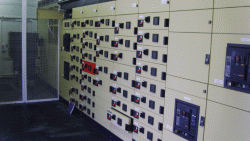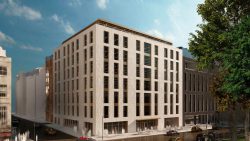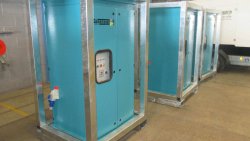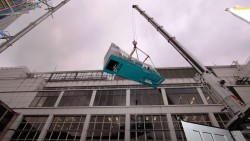Standby Generator Installation at Major Department Store
The Customer
The largest department store retailer in the UK, operating 45 shops across the UK.
This store has been an integral part of Newcastle’s high street since it was founded as Bainbridge in 1838 Circa.
At 5.30am on 14th November our 24 hour call out bureau received a call notifying us that a major department store in Newcastle city centre had lost all its power and was in complete darkness. Taking into consideration that it was less than 6 weeks before Christmas, this was a critical time for the store.
We despatched our local engineer who was on site within the hour. On inspection, he was informed that a water leak had found its way into the high voltage switch room in the basement of the store and subsequently the switchgear had suffered a catastrophic failure.
Our engineer diagnosed that the 38-year-old standby generator did not support sufficient electrical circuits for the store to trade. It had overloaded and overheated when the sales floor lights were switched on. The store was effectively without a standby generator.
By 9.00am, our engineer had surveyed the Low Voltage electrical infrastructure and had identified a means of connecting temporary generators in order to allow the store to open and trade. He also identified that finding a satisfactory location for the generators was problematical. The Generator Company therefore despatched their transport manager to assist the store management in their negotiations with surrounding premises to identify a suitable and accessible location.
Following negotiations and agreement our rental division, Powerhire, organised crane hire and despatched both a 20 tonne 1250kVA generator complete with a 4500 litre fuel tank and a 7 tonne 500kVA temporary generator complete with a 3000L fuel tank. These were delivered to site and off loaded into position overnight into a very restricted space in a nearby office car park, protected by temporary HERAS fencing.
Two 6-man groups of cable technicians worked through the night and the following day running 250 meter cables to the store’s switch room. In total 1750 meters of cable, weighing some 4500kg were handled during this period. This hard work, together with prompt response times by the Company, allowed the store to open for trade at the normal opening time 2 days after losing power.
The generators continually supplied power to the store for 2 weeks until the High Voltage switchgear was replaced. The Generator Company provided fuel throughout this period, supplying a total of 29,000 litres of fuel.
During this 2 week period, The Generator Company assigned a Technical Manager to liaise with the stores electrical consultant to identify how best to provide a standby facility after the mains power had been restored to the store. Following discussion, our engineers removed one of the temporary generators and made changes to the electrical distribution to allow one generator to support the essential services, in the event of a mains supply failure, throughout the stores peak trading period of Christmas and New Year.
On completions of survey work, The Generator Company were able to advise the most suitable location for, and rating of, the optimal long term standby generator package and were privileged to be awarded the contract to supply and install 3 off 400kVA prime rated permanent generators and 3 off free standing control panels to be installed in an existing roof plant room, which was also used as a workshop for the maintenance staff.
This gave us two major issues to deal with. One was the location of the plant room, which although at the top of the building had a high level car park on two sides which was accessed through an adjacent multi storey car park. The access through the multi storey car park was not suitable to get the delivery vehicles to the roof.
The second issue was the space available in the plant room, although the workshop equipment and office were to be removed; the existing duct work and pipe services were to remain.
To deliver the generators and associated equipment it was decided that these would be lifted by mobile crane from ground level 6 floors up onto the roof car park and be manoeuvred through the new air discharge opening in the plant room wall. The only location that could be used for the crane was in the local bus station which meant agreement had to be obtained from the bus operators. It was established that the crane could only operate in the bus station when it was closed from 00:00 hours until 04:30, this time slot would include the crane setting up time.
A conventional mobile crane could not be used for the lift because of the restricted space in the bus station
and the time it would take to setup and derig would leave very little time to offload and position the generators. It was decided to use a Spierings’ SK2400 hydraulic folding crane which could rig and de-rig quickly affording us maximum time to offload.
Having settled on a crane that could work in the confined space of the bus station it was established that the crane could not reach the plant room access opening, it was short by 9 metres. This meant we would have to land the generator onto the roof car park and manoeuvre to the plant room opening.
Prior to any works, the roof was checked by engineers to establish that it could support the weight of the 5 tonne generator and we were asked to install a temporary runway from the landing point in the car park to the plant room entrance to protect the roof.
The offloading works took place over three nights. Due to the limited space in the plant room the generators and associated equipment had to be sequenced, the inlet attenuator and one generator on the first night, two generators on the second night and the outlet ducting, attenuator, exhaust system on the third night.
On satisfactory completion of the standby generator installation project all 3 generators were successfully tested by The Generator Company engineers and complete standby cover to the store was restored.





